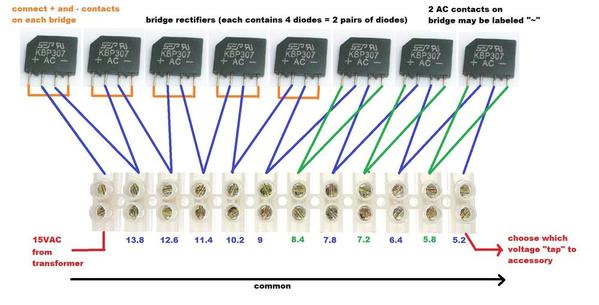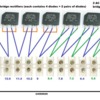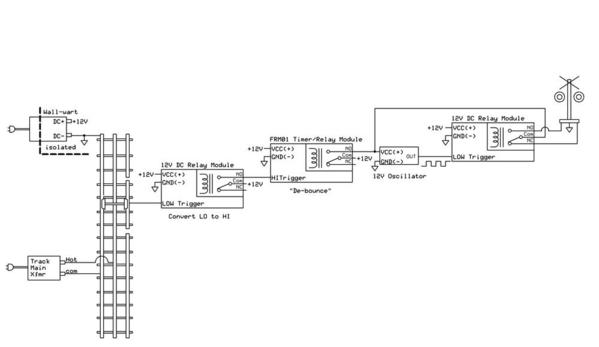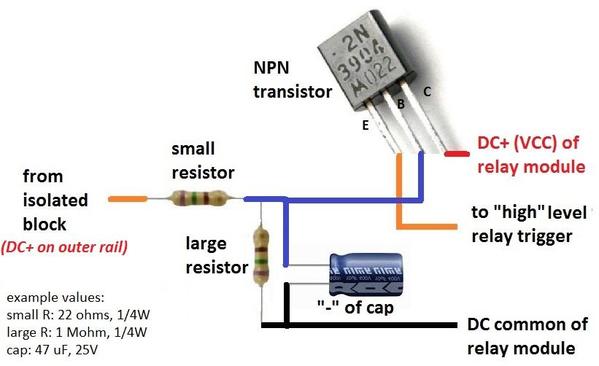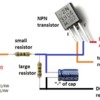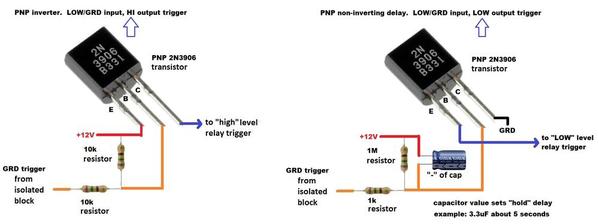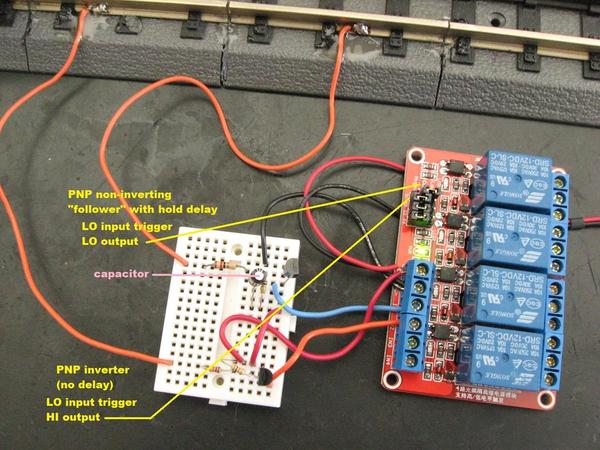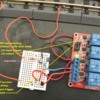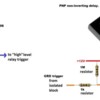Stan, again, thank you as always. And yes all of the crossing accessories you have mentioned are part of my problem. Is there a specific company that makes the more modern of these accessories (or do they all)?
In the meantime, a new issue has arisen after experimenting with crossing control. If you remember, you provided me with the circuits to do opto-detection. I built a couple and I liked, but the circuitry got a little out of hand for such a small task. Soooo, I took the low road and used a section of Gargraves track to provide crossing detection. I initially just used the Oscillator module and 2-ch relay module you had recommended some time ago. The diagram I have attached shows the circuit I used with the track, with the exception of the Time Delay Relay that I did not use. When I placed a car on the track, the accessory flashed perfectly at the rate set in the Osc Module. However, when I ran a train over that track, the intermittent contact provided constant re-triggers to the Osc & Relay modules and the result was a mess. So, I thought maybe adding a time delay such that once triggering occurs, even if the trigger goes on and off, the time delay holds the secondary trigger for the delay period until after the last trigger.
The included diagram shows my approach. It's not very big, so I hope not too hard to read. If this is a reasonable approach, the problem I have is finding a time delay relay on ebay, where the description explains that the delay is to hold the relay in the triggered state for the selected time, starting after the last trigger. I also thought about maybe a capacitive-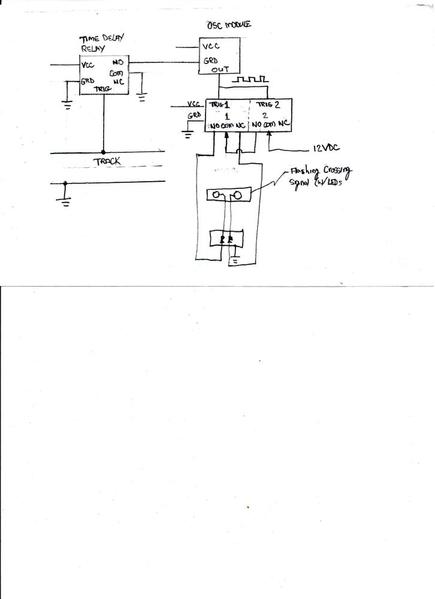 resistive circuit to provide an ON delay, but I would probably set the house on fire.
resistive circuit to provide an ON delay, but I would probably set the house on fire.
Any help would be appreciated.
Ken





